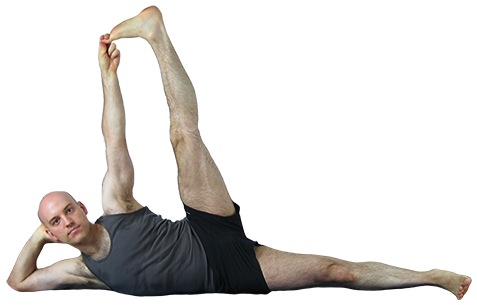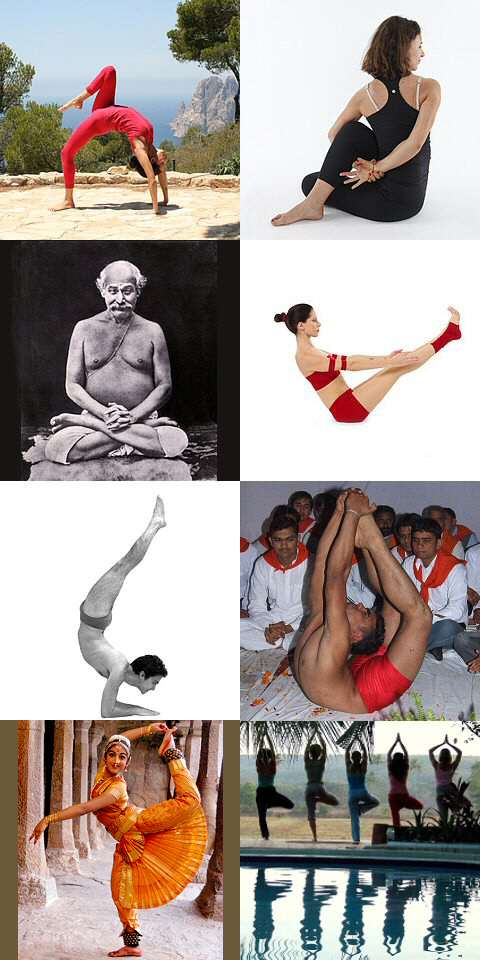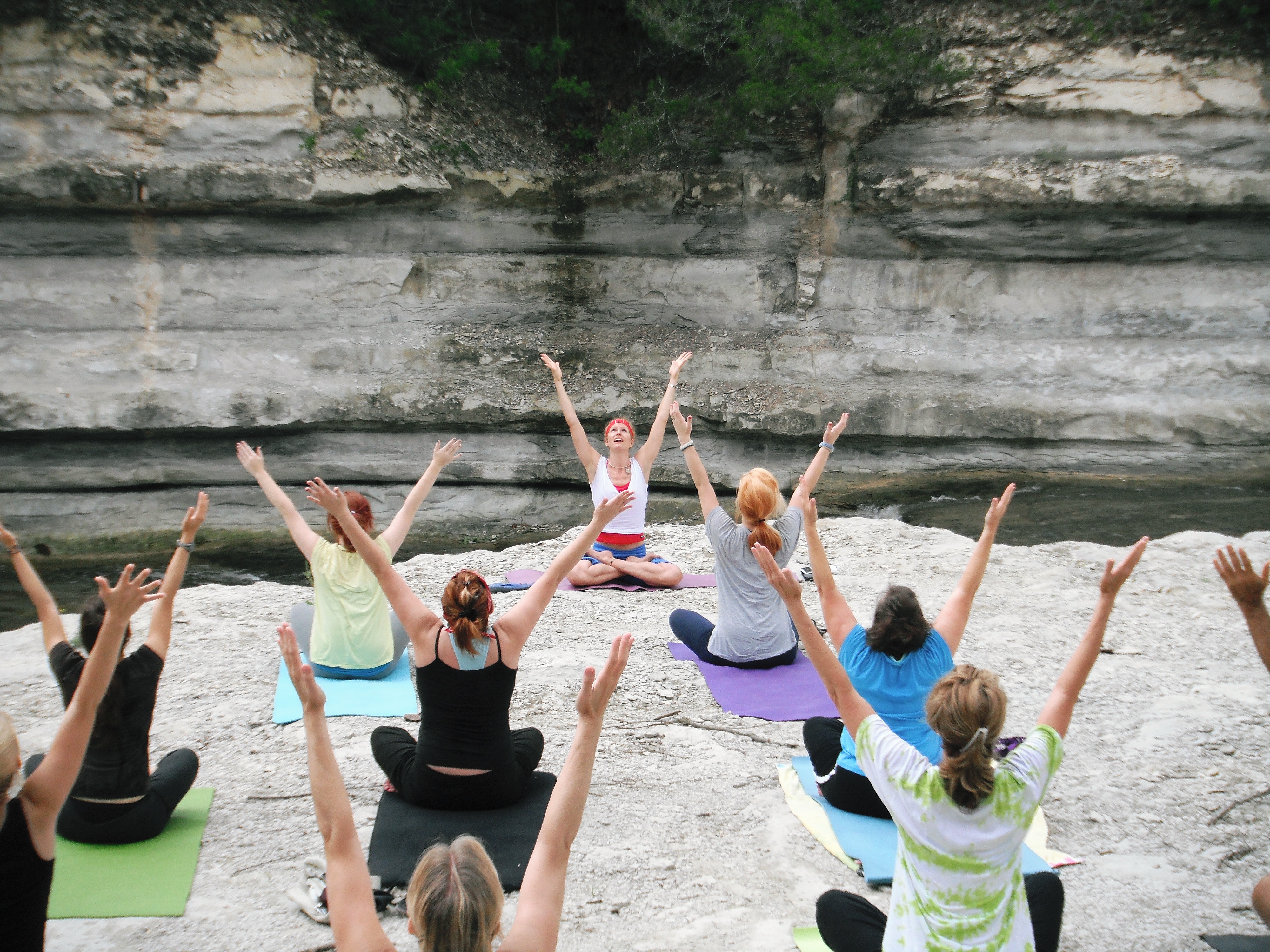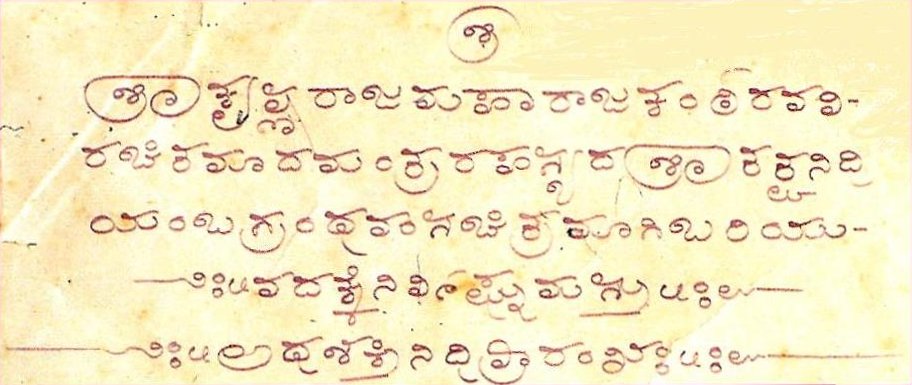|
Anantasana
Anantasana (; IAST: ), Sleeping Vishnu Pose or Vishnu's Couch Pose, Eternal One's Pose, or Side-Reclining Leg Lift is an asana in modern yoga as exercise. Etymology and origins The name comes from the Sanskrit words '' anantā'' () meaning "without end" or "the infinite one", for the thousand-headed serpent Shesha upon which Vishnu rested at the bottom of the primordial ocean, and āsana () meaning "posture" or "seat". A different reclining pose named Anantasana is described and illustrated in the 19th century ''Sritattvanidhi''. The modern pose is described in the 1966 ''Light on Yoga ''Light on Yoga: Yoga Dipika'' (Sanskrit: योग दीपिका, "Yoga Dīpikā") is a 1966 book on the Iyengar Yoga style of modern yoga as exercise by B. K. S. Iyengar, first published in English. It describes more than 200 yoga postu ...''. Description Anantasana is entered from a lying position. The head is supported with one hand, the upper arm on the ground on that side; ... [...More Info...] [...Related Items...] OR: [Wikipedia] [Google] [Baidu] |
Asana
An āsana (Sanskrit: आसन) is a body posture, originally and still a general term for a sitting meditation pose,Verse 46, chapter II, "Patanjali Yoga sutras" by Swami Prabhavananda, published by the Sri Ramakrishna Math p. 111 and later extended in hatha yoga and modern yoga as exercise, to any type of position, adding reclining, standing, inverted, twisting, and balancing poses. The ''Yoga Sutras of Patanjali'' define "asana" as " position thatis steady and comfortable". Patanjali mentions the ability to sit for extended periods as one of the eight limbs of his system. Patanjali '' Yoga sutras'', Book II:29, 46 Asanas are also called yoga poses or yoga postures in English. The 10th or 11th century '' Goraksha Sataka'' and the 15th century '' Hatha Yoga Pradipika'' identify 84 asanas; the 17th century '' Hatha Ratnavali'' provides a different list of 84 asanas, describing some of them. In the 20th century, Indian nationalism favoured physical culture in response t ... [...More Info...] [...Related Items...] OR: [Wikipedia] [Google] [Baidu] |
Reclining Asanas
An āsana (Sanskrit: wikt:आसन, आसन) is a body posture, originally and still a general term for a meditation seat, sitting meditation pose,Verse 46, chapter II, "Patanjali Yoga sutras" by Swami Prabhavananda, published by the Sri Ramakrishna Math p. 111 and later extended in hatha yoga and modern yoga as exercise, to any type of position, adding reclining, standing asanas, standing, inverted, twisting, and balancing poses. The ''Yoga Sutras of Patanjali'' define "asana" as "[a position that] is steady and comfortable". Patanjali mentions the ability to sit for extended periods as one of the Ashtanga (eight limbs of yoga), eight limbs of his system.Patanjali ''Yoga Sutras of Patanjali, Yoga sutras'', Book II:29, 46 Asanas are also called yoga poses or yoga postures in English. The 10th or 11th century ''Goraksha Samhita, Goraksha Sataka'' and the 15th century ''Hatha Yoga Pradipika'' identify 84 asanas; the 17th century ''Haṭha Ratnāvalī, Hatha Ratnavali'' provid ... [...More Info...] [...Related Items...] OR: [Wikipedia] [Google] [Baidu] |
Core Strength Asanas
An āsana (Sanskrit: आसन) is a body posture, originally and still a general term for a sitting meditation pose,Verse 46, chapter II, "Patanjali Yoga sutras" by Swami Prabhavananda, published by the Sri Ramakrishna Math p. 111 and later extended in hatha yoga and modern yoga as exercise, to any type of position, adding reclining, standing, inverted, twisting, and balancing poses. The ''Yoga Sutras of Patanjali'' define "asana" as " position thatis steady and comfortable". Patanjali mentions the ability to sit for extended periods as one of the eight limbs of his system.Patanjali ''Yoga sutras'', Book II:29, 46 Asanas are also called yoga poses or yoga postures in English. The 10th or 11th century '' Goraksha Sataka'' and the 15th century ''Hatha Yoga Pradipika'' identify 84 asanas; the 17th century ''Hatha Ratnavali'' provides a different list of 84 asanas, describing some of them. In the 20th century, Indian nationalism favoured physical culture in response to coloni ... [...More Info...] [...Related Items...] OR: [Wikipedia] [Google] [Baidu] |
IAST
The International Alphabet of Sanskrit Transliteration (IAST) is a transliteration scheme that allows the lossless romanisation of Brahmic family, Indic scripts as employed by Sanskrit and related Indic languages. It is based on a scheme that emerged during the 19th century from suggestions by Sir Charles Trevelyan, 1st Baronet, Charles Trevelyan, William Jones (philologist), William Jones, Monier Monier-Williams and other scholars, and formalised by the Transliteration Committee of the Geneva International Congress of Orientalists, Oriental Congress, in September 1894. IAST makes it possible for the reader to read the Indic text unambiguously, exactly as if it were in the original Indic script. It is this faithfulness to the original scripts that accounts for its continuing popularity amongst scholars. Usage Scholars commonly use IAST in publications that cite textual material in Sanskrit, Pāḷi and other classical Indian languages. IAST is also used for major e-text repos ... [...More Info...] [...Related Items...] OR: [Wikipedia] [Google] [Baidu] |
Yoga Journal
''Yoga Journal'' is a website and digital journal, formerly a print magazine, on yoga as exercise founded in California in 1975 with the goal of combining the essence of traditional yoga with scientific understanding. It has produced live events and materials such as DVDs on yoga and related subjects. The magazine grew from the California Yoga Teachers Association's newsletter, which was called ''The Word''. ''Yoga Journal'' has repeatedly won Western Publications Association's Maggie Awards for "Best Health and Fitness Magazine". It has however been criticized for representing yoga as being intended for affluent white women; in 2019 it attempted to remedy this by choosing a wider variety of yoga models. The magazine was acquired by Outside in 2020. Beginnings ''Yoga Journal'' was started in May 1975 by the California Yoga Teachers Association (CYTA), with Rama Jyoti Vernon as President, William Staniger as the founding editor, and Judith Lasater on the board and serving as ... [...More Info...] [...Related Items...] OR: [Wikipedia] [Google] [Baidu] |
Yoga As Exercise
Yoga as exercise is a physical activity consisting mainly of asana, postures, often connected by vinyasa, flowing sequences, sometimes accompanied by pranayama, breathing exercises, and frequently ending with savasana, relaxation lying down or meditation. Yoga in this form has become familiar across the world, especially Yoga in the United States, in the US and Europe. It is derived from medieval Haṭha yoga, which made use of similar postures, but it is generally simply called "yoga". Academic research has given yoga as exercise a variety of names, including modern postural yoga and transnational anglophone yoga. Postures were not central in any of the older traditions of yoga; posture practice was revived in the 1920s by yoga gurus including Yogendra and Kuvalayananda, who emphasised its health benefits. The flowing sequences of Surya Namaskar (Salute to the Sun) were pioneered by the Rajah of Aundh State, Aundh, Bhawanrao Shrinivasrao Pant Pratinidhi, in the 1920s. It and ma ... [...More Info...] [...Related Items...] OR: [Wikipedia] [Google] [Baidu] |
A Sculpture Of Sleeping Vishnu Hindu Deity At Museum CSMVS Mumbai
A, or a, is the first letter and the first vowel letter of the Latin alphabet, used in the modern English alphabet, and others worldwide. Its name in English is '' a'' (pronounced ), plural ''aes''. It is similar in shape to the Ancient Greek letter alpha, from which it derives. The uppercase version consists of the two slanting sides of a triangle, crossed in the middle by a horizontal bar. The lowercase version is often written in one of two forms: the double-storey and single-storey . The latter is commonly used in handwriting and fonts based on it, especially fonts intended to be read by children, and is also found in italic type. In English, '' a'' is the indefinite article, with the alternative form ''an''. Name In English, the name of the letter is the ''long A'' sound, pronounced . Its name in most other languages matches the letter's pronunciation in open syllables. History The earliest known ancestor of A is ''aleph''—the first letter of the Phoenician ... [...More Info...] [...Related Items...] OR: [Wikipedia] [Google] [Baidu] |
Ananta (infinite)
''Ananta'' (), is a Sanskrit term, and primarily an epithet of Vishnu. Vaishnavism It is one of many of the names of Vishnu. Ananta is also a name of Shesha, the celestial snake, on which Vishnu reclines in the cosmic ocean. In the Mahabharata, Ananta, or Shesha, is the son of Kashyapa, one of the Prajapatis, through Kadru as her eldest son. Kadru had asked her sons to stay suspended in the hair of Uchchaihshravas’s tail who on refusing to do so were cursed to die at the serpent-yajna of Janamejaya. Ananta was saved by Brahma who directed him to go to the nether world and support the world on his hoods, and thus became the king of the Nagas in Patala. By the grace of Ananta, Garga was able to master the sciences of astronomy and causation. In Hindu tradition, it is said that Rudra will emanate from the face of Ananta and consume the three worlds at the end of a kalpa. Ananta is also an epithet of Brahma, Shiva, Skanda, Krishna, Balarama, earth, and the letter ... [...More Info...] [...Related Items...] OR: [Wikipedia] [Google] [Baidu] |
Shesha
Shesha (), also known by his epithets Sheshanaga () and Adishesha (), is a serpentine demigod ( naga) and king of the serpents ( Nagaraja), as well as a primordial being of creation in Hinduism. In the Puranas, Shesha is said to hold all the planets of the universe on his hoods and to constantly sing the glories of Vishnu from all his mouths. He is sometimes referred to as Ananta Shesha. The Narayana form of Vishnu is often depicted as resting on Shesha, accompanied by his consort Lakshmi. Shesha is considered as one of the two mounts of Vishnu alongside Garuda. He is said to have descended upon Earth in the following human forms or incarnations: Lakshmana, brother of Vishnu's incarnation Rama during the Treta Yuga, and according to some traditions, as Balarama, brother of Vishnu's incarnation Krishna during the Dvapara Yuga. According to the Mahabharata (Adi Parva), his father was Kashyapa and his mother Kadru, though in other accounts, he is usually a primordial being cre ... [...More Info...] [...Related Items...] OR: [Wikipedia] [Google] [Baidu] |
Vishnu
Vishnu (; , , ), also known as Narayana and Hari, is one of the Hindu deities, principal deities of Hinduism. He is the supreme being within Vaishnavism, one of the major traditions within contemporary Hinduism, and the god of preservation (sattva). Vishnu is known as ''The Preserver'' within the Trimurti, the triple deity of Para Brahman, supreme divinity that includes Brahma and Shiva.Gavin Flood, An Introduction to Hinduism' () (1996), p. 17. In Vaishnavism, Vishnu is the supreme Lord who creates, protects, and transforms the Hindu cosmology, universe. Tridevi is stated to be the energy and creative power (Shakti) of each, with Lakshmi being the equal complementary partner of Vishnu. He is one of the five equivalent deities in Panchayatana puja of the Smarta tradition of Hinduism. According to Vaishnavism, the supreme being is with qualities (Saguna Brahman, Saguna), and has definite form, but is limitless, transcendent and unchanging absolute Brahman, and the primal Atma ... [...More Info...] [...Related Items...] OR: [Wikipedia] [Google] [Baidu] |
Sritattvanidhi
The ''Sritattvanidhi'' (, "The Illustrious Treasure of Realities") is a treatise written in the 19th century in the Mysore Palace, Karnataka on the iconography and iconometry of divine figures in South India. One of its sections includes instructions for, and illustrations of, 122 hatha yoga postures. Authorship The ''Sritattvanidhi'' is attributed to the then Maharaja of Mysore, Krishnaraja Woḍeyar III (b. 1794 - d. 1868). The Maharaja was a great patron of art and learning, and was himself a scholar and writer. Around 50 works are ascribed to him. The first page of the ''Sritattvanidhi'' attributes authorship of the work to the Maharaja himself: Martin-Dubost's review of the history of this work says that the Maharaja funded an effort to put together in one work all available information concerning the iconography and iconometry of divine figures in South India. He asked that a vast treatise be written, which he then had illustrated by miniaturists from his palace. ... [...More Info...] [...Related Items...] OR: [Wikipedia] [Google] [Baidu] |








